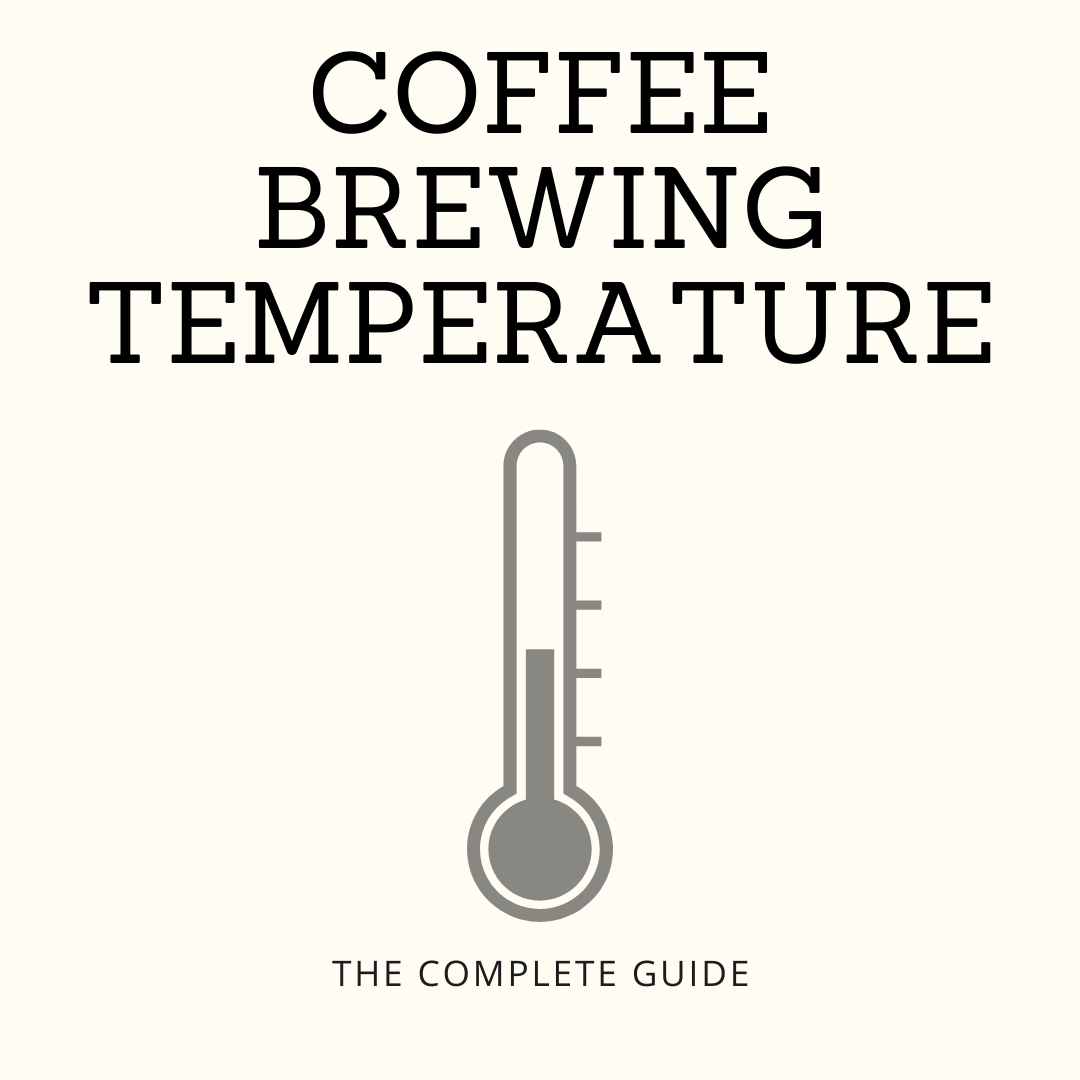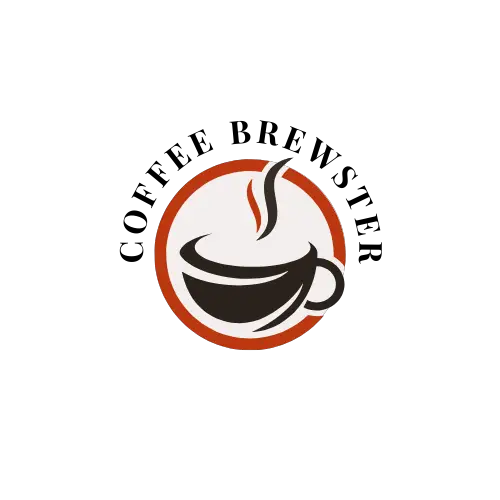An essential part of making great coffee is getting the coffee brewing temperature right.
Just like you can’t bake something if the oven temperature is too hot or too cold, you can’t make good coffee if the water temperature is too hot or too cold.

So what’s the best coffee brewing temperature?
To extract the best flavor from your coffee, you’ll need to brew at the correct temperature. The best temperature for brewing coffee is 205 degrees Fahrenheit or around 96 degrees Celsius.
The SCA [1] recommends an exact temperature of 200 degrees for brewing with drip coffee makers. Most people recommend 200 degrees, so it’s safe to say a 200-205 degrees F range is more suitable.
No matter which method you use to brew coffee grounds, whether it’s drip, French press, or otherwise, 205 degrees Fahrenheit is the water temperature you want to be at.
Anything cooler and you’ll get an under-extracted, weak cup of coffee – if you could even call it coffee!
There’s more than meets the eye with coffee brewing temperature
So here’s where things get interesting. while it’s certainly fine to use the 200-205 degree range to brew your coffee, some people advocate using water straight off a boil.
This applies even more so to manual brewing methods like pour overs and french press coffees.
Why you may want to make your pour overs right off the boil
Pour over coffee takes a few minutes to brew, and if you use a method like a pulsing pour over, it will take even longer. So unless you keep reheating the water before each pour, you want the water to be as hot as possible.
Your first pour will be the hottest, and your subsequent pours will be slightly cooler, as you’ll have waited 30-45 seconds between the first and second pour.
If the water is too cold, you’ll end up with a really poor tasting coffee. If the water temperature is a couple of degrees higher, you won’t really notice it!
Not all water is the same, and basic chemistry states that when you start adding impurities to water, the boiling point is going to fall.
So if you live in an area with hard water, you may find that your tap water actually boils at a little under 100 degrees C!
In this situation, if you were to make your coffee using the traditional method of leaving the water after boiling for about 30 seconds, you’d find the water temperature to be actually lower than the desired 95 degrees C or 200-205 degrees F.
You can verify this by using a thermometer in your hot water kettle.
Here’s where things get even more interesting:
If your water boils at less than 100 degrees C, there’s no way you can get liquid water hotter than that unless you remove the impurities or increase the pressure.
So if you have hard water, it would be worthwhile to use filtered or RO-purified water to brew your coffee.
Varying water temperature for specific brews
Another way to go about it is to use varied water temperatures for the kind of brew you are making. If you’re using hard water, your upper ceiling will be whatever the boiling point is!
Some brewing methods actually work with slightly lower temperatures. We’ll only discuss manual brews as there are hardly any coffee machines that let you adjust the temperature to the nth degree.
Cowboy coffee
Cowboy coffee requires you to boil the coffee! You mix coffee grounds and water, let the whole mixture come to a boil, then turn the heat down and let it sit.
Turkish and Arabic coffee
Turkish coffee and Arabic coffee (qahwa) both involve boiling the coffee multiple times before getting a finished product. Every time the coffee boils and starts to spill over, you reduce the heat to a simmer, then bring it back up.
French press
To brew french press, we recommend using water right off the boil, or water that you have measured to be 200-205 degrees F. This is because french press is a steeping method, and by the time the brew is done, the coffee will be much cooler than when you started.
You can get around this by using a tea cozy or a towel and wrapping the french press to insulate it. You can also find insulated french presses.
Pour over
You already read above that pour over coffee should be made right off the boil, or if you have a temperature controlled kettle, right at 200-205 degrees F.
Aeropress (brewing with a lower temperature)
Aeropress is actually an interesting device since the manufacturer recommends brewing at 80 to 85 degrees C. They did a lot of experimenting to arrive at this number, and Aeropress coffee is actually some of the best coffee you’ll ever taste, period.
One reason the Aeropress can do so well with slightly lower temperatures is that it uses pressure to brew, so where a hotter temperature would have extracted the flavors at normal pressure, a lower temperature does it just as well at a higher pressure.
As a side note, this is why espresso is so strong: water is both at a very high pressure and incredibly hot!
Cold brewing
With cold brewing, we’re completely out of the realm of using hot water at all and now we use room temperature or refrigerator-cold water.
Unlike hot brews which are usually done in a matter of minutes, cold brews take 12 to 24 hours.
At such low temperatures, the water molecules move so slowly that they take their sweet time to interact with all the coffee grounds.
The lower speed also means the molecules are less “rough” with the coffee molecules, which is why cold brews taste much smoother and are less acidic than hot brews.
How to measure water temperature
Assuming you’re just using a regular kettle to heat up your water, you can use a simple cooking thermometer to get the exact temperature of the water.
Most households have one of these lying around as they’re also very useful for cooking meat and chicken.
Just insert the probe end of the thermometer into the water and see what the water temperature is.
A fancier way to measure the water temperature and a way you can definitely impress your friends is by using a laser thermometer.
You simply point the thermometer at the water and you’ll get an exact reading of the water temperature.
This may seem a little excessive but laser thermometers are definitely a cool gadget to have, and they’re not too expensive.
Finally, yet a more efficient option is an electric gooseneck kettle. Many gooseneck kettles have various water temperature settings built in.
You simply enter the number you wish to reach and the kettle will heat up to exactly that much.
Plus, you’ll have the added benefit of the gooseneck to perfectly bloom your coffee grounds and wet them evenly as you brew.
If you can’t get your hands on a kettle with a built-in thermometer, you can just let the water come to a boil and remove it from the heat, open the top of the kettle to increase surface area, and let the water rest for 30 seconds.
This should drop the water temperature by 4-7 degrees C and get you in the 96 degree/205 degree range, ready to mix with your coffee grounds.
Frequently asked questions
Can you brew with cold water?
You can make cold brew with cold water. Some recipes will call for room temperature water, and others call for cold water. Either is fine, because at that range, the brewing process has slowed down enough anyway.
What happens if you brew coffee too hot?
If the water temperature is too hot, you’ll end up with an over-extracted cup.
Over-extraction is when the compounds from the coffee grounds are released too quickly, which tend to make the cup bitter and overly sour.
Keeping the water just under a boil will help make sure the flavors are extracted as evenly as possible, which is why the ideal coffee brewing temperature is 96 degrees Celcius.
Letting the water boil for too long can also ruin the cup, as boiling tends to concentrate the mineral content of water.
What’s the best temperature to drink coffee?
As you may imagine, drinking coffee right after it has been brewed is more likely to burn your tongue rather than excite your taste buds.
You should let coffee cool down a little before drinking it. How much you should let it cool really depends, as variances in temperature will affect the taste [2].
The higher end of temperature will taste slightly bitter and have notes of sweetness.
The medium end of temperature will taste more towards the bright and acidic range.
Related Article:
References:
- https://sca.coffee/research/protocols-best-practices/
- https://pubmed.ncbi.nlm.nih.gov/18226454/



